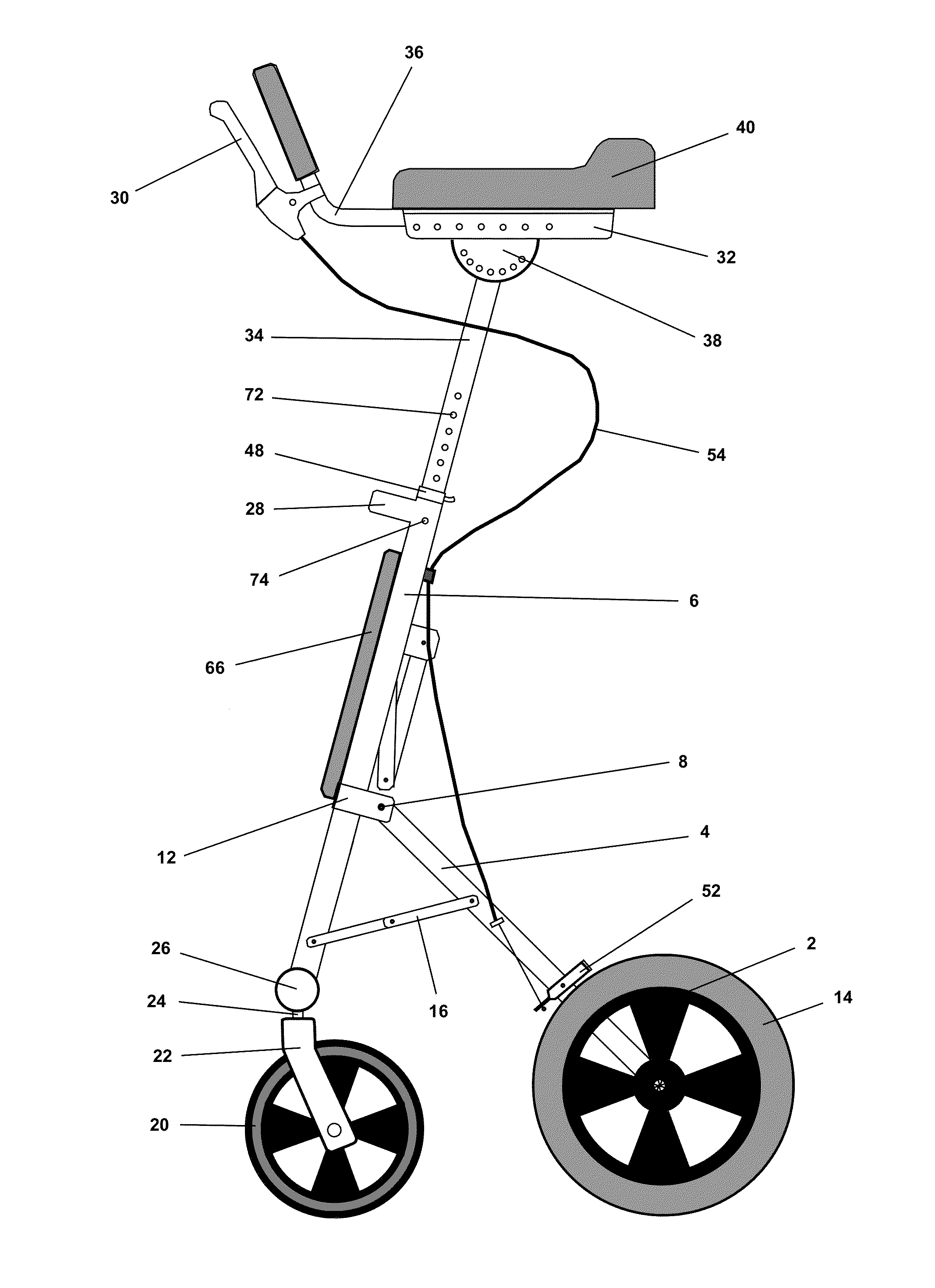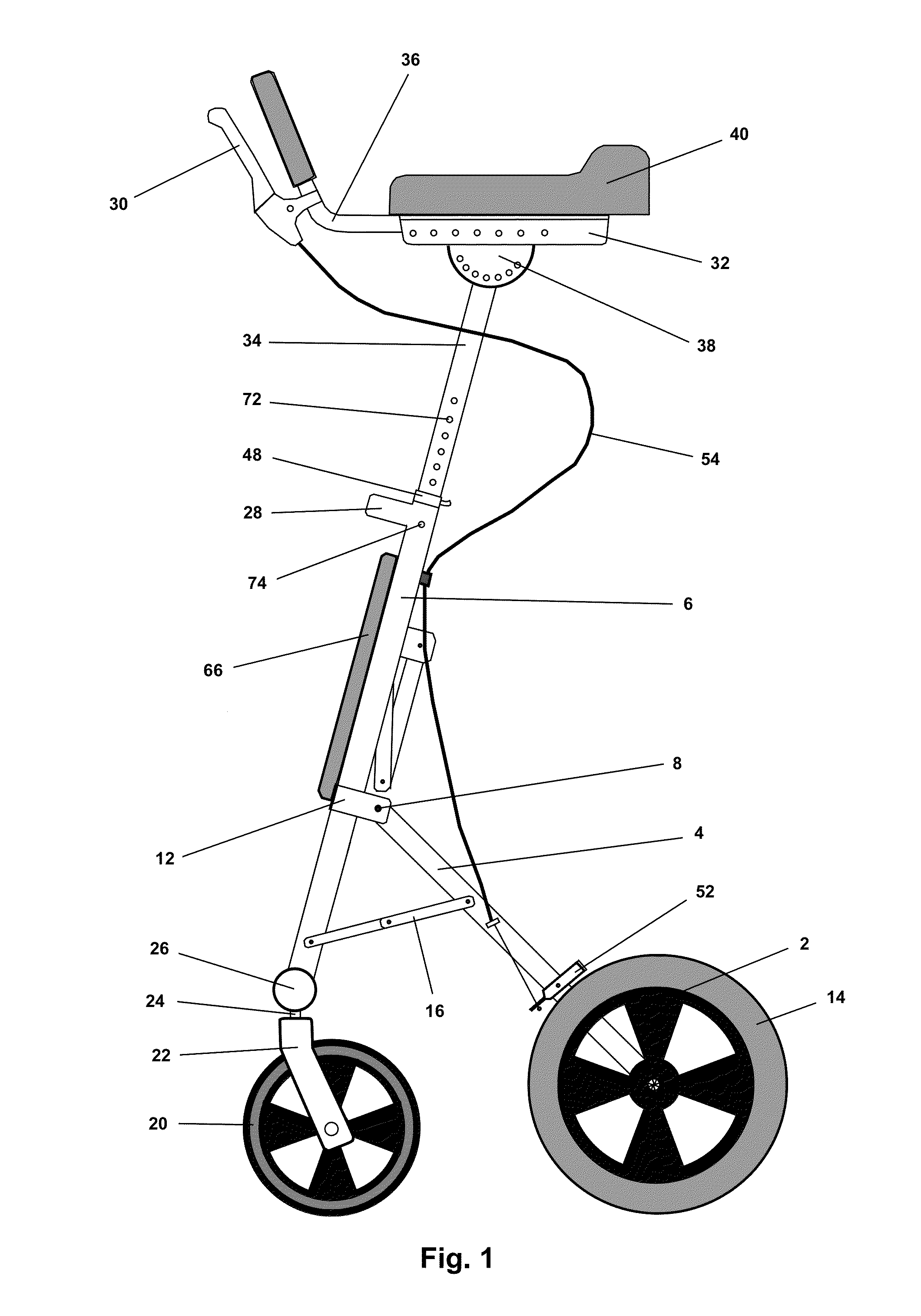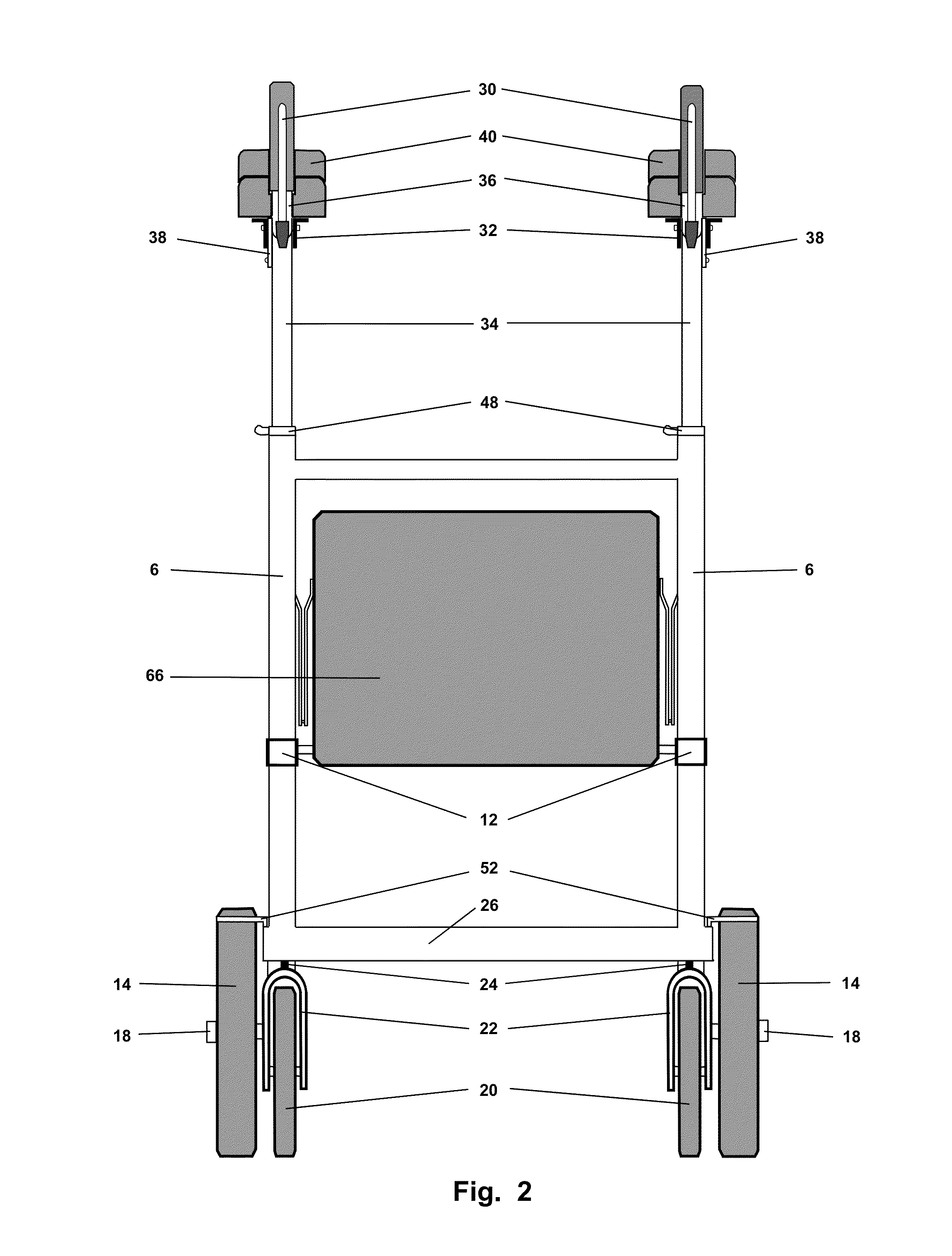Erect posture mobility device with low turn radius
a mobility device and low turn radius technology, applied in the field of mobility devices, can solve the problems of not being designed, deviations in the horizontal platform position, and not being subject to design
- Summary
- Abstract
- Description
- Claims
- Application Information
AI Technical Summary
Benefits of technology
Problems solved by technology
Method used
Image
Examples
Embodiment Construction
[0039]The present invention describes a mobility device designed to maintain stable and erect body posture of a user and provide low-radius rotational mobility while a user is engaged in motion. The device has a smaller area of base of support, as compared to most conventional rollators.
[0040]In general the device includes the following components: a frame comprising two upright supports; one or more members connecting the two upright supports; two rear wheel struts whose lengths are adjustable; one or more front wheels and two rear wheels; and two arm saddle structures functionally attached to the two upright supports, such that the saddle structures are designed to place the forearm of the user in a position parallel to the ground and such that the user's center of gravity falls within an area of a base of support of the device, thereby maintaining stable and erect body posture and providing low-radius rotational mobility while the user is engaged in motion.
[0041]In general, the u...
PUM
 Login to View More
Login to View More Abstract
Description
Claims
Application Information
 Login to View More
Login to View More - R&D
- Intellectual Property
- Life Sciences
- Materials
- Tech Scout
- Unparalleled Data Quality
- Higher Quality Content
- 60% Fewer Hallucinations
Browse by: Latest US Patents, China's latest patents, Technical Efficacy Thesaurus, Application Domain, Technology Topic, Popular Technical Reports.
© 2025 PatSnap. All rights reserved.Legal|Privacy policy|Modern Slavery Act Transparency Statement|Sitemap|About US| Contact US: help@patsnap.com



